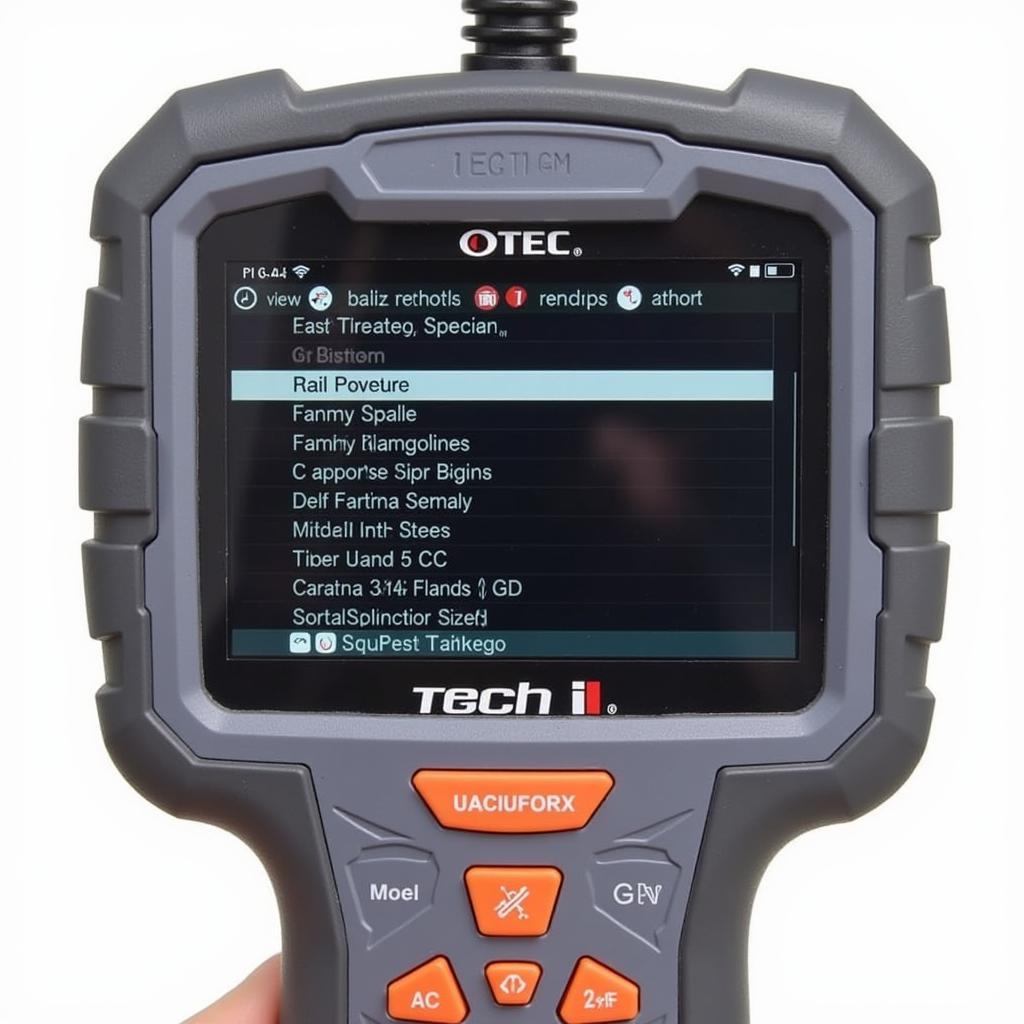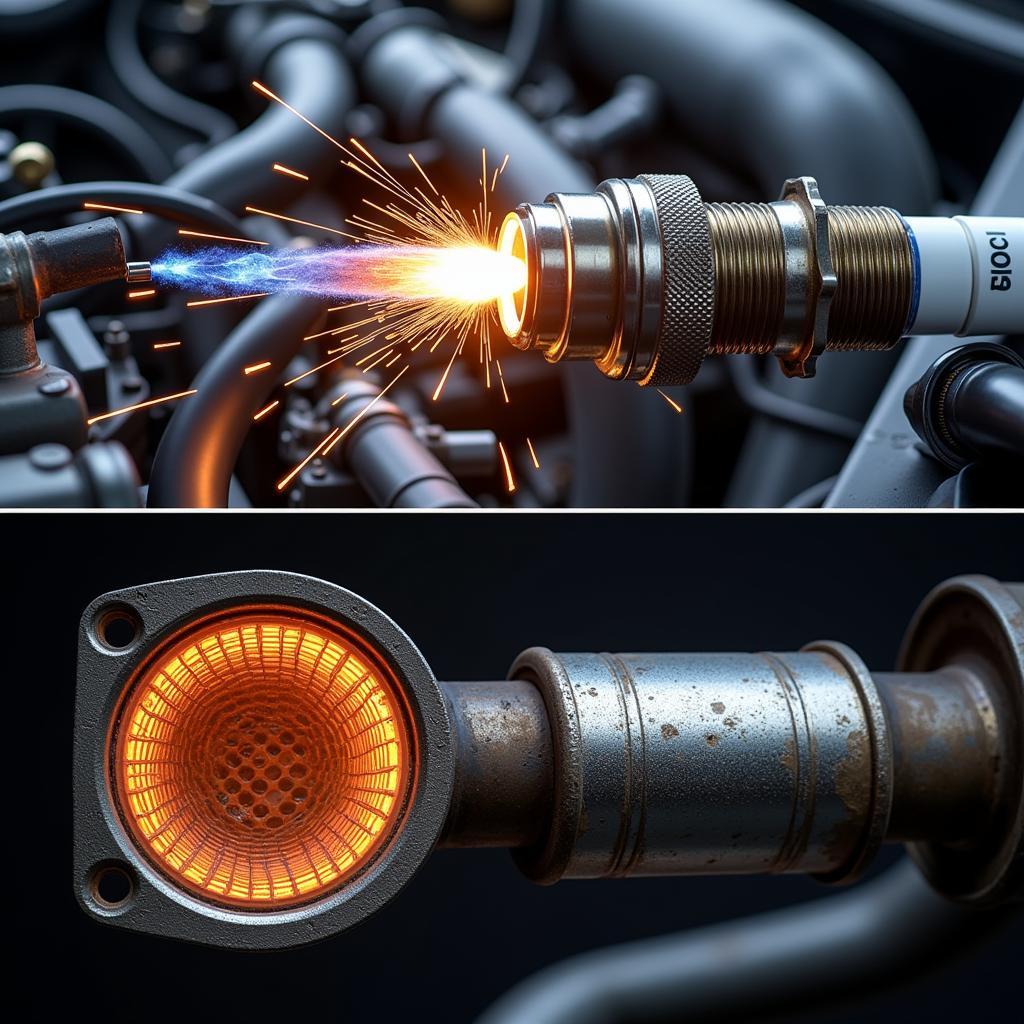Modern vehicles are more technologically advanced than ever, packed with complex electronic systems and sensors. When a warning light flashes on your dashboard, it can be frustrating and concerning. Thankfully, Automobile Diagnostic Scan Tools have evolved to help car owners and mechanics pinpoint the source of automotive issues with greater accuracy. These tools are a game-changer for anyone who wants to understand and address their car troubles, offering a wealth of information that was once accessible only to seasoned mechanics.
This comprehensive guide delves into the world of automobile diagnostic scan tools, exploring their functionality, types, benefits, and how they can save you time and money. Whether you’re a car enthusiast looking to demystify your vehicle’s inner workings or a professional mechanic aiming to upgrade your diagnostic game, this guide is your key to understanding and leveraging the power of these essential tools.
Understanding Automobile Diagnostic Scan Tools
At their core, automobile diagnostic scan tools are electronic devices designed to interface with your car’s onboard computer, the Engine Control Unit (ECU). The ECU is the brain of your vehicle, constantly monitoring various systems and sensors for optimal performance. When a problem arises, the ECU logs a Diagnostic Trouble Code (DTC), a unique code that hints at the nature of the issue.
Diagnostic scan tools act as a bridge between you and the ECU, allowing you to “read” these DTCs and decode their meaning. Think of it as having a direct line to your car’s internal communication system, revealing the secrets behind those cryptic dashboard warning lights.
[image-1|obd-scanner-connected-to-car|Car Diagnostic Scan Tool|A close-up image showcasing an OBD scanner plugged into the OBD-II port located beneath the dashboard of a car. The scanner screen illuminates, displaying diagnostic data and trouble codes.]
Types of Automobile Diagnostic Scan Tools
There is a wide array of diagnostic scan tools available, catering to different needs and budgets. Understanding the different types can help you choose the tool best suited for your requirements.
1. Basic Code Readers:
These are entry-level tools that provide a simple readout of DTCs stored in the ECU. While they don’t offer in-depth analysis or advanced features, they are a cost-effective option for DIY enthusiasts looking to understand the basic nature of car problems.
2. OBD-II Scanners:
OBD-II (On-Board Diagnostics) scanners are more sophisticated tools that can access a broader range of data from the ECU, including live sensor readings, freeze frame data (snapshot of the vehicle’s parameters when the error occurred), and emissions readiness status. They are suitable for both car owners and professionals who require more detailed diagnostic information.
3. Professional Diagnostic Scan Tools:
Used primarily by mechanics and automotive specialists, these are high-end tools offering comprehensive diagnostic capabilities. They can perform advanced functions like bi-directional control (activating specific components for testing), programming, coding, and accessing manufacturer-specific data. These tools often come with extensive databases and software for in-depth analysis.
[image-2|mechanic-using-professional-scan-tool|Professional Mechanic Using Scan Tool|A mechanic in a professional workshop environment is using a high-end diagnostic scan tool connected to a vehicle. The image showcases the mechanic analyzing detailed diagnostic data and graphs displayed on the scan tool’s screen.]
Benefits of Using Automobile Diagnostic Scan Tools
Investing in a good diagnostic scan tool, even a basic one, can provide significant advantages:
- Early Problem Detection: Identifying issues early with a scan tool can prevent minor problems from escalating into major (and expensive) repairs down the road.
- Accurate Diagnosis: Scan tools eliminate the guesswork often associated with car repairs, providing accurate DTCs that lead to precise diagnoses.
- Cost Savings: By identifying problems yourself, you can save money on diagnostic fees charged by mechanics.
- Increased Knowledge: Using scan tools empowers you with knowledge about your vehicle’s inner workings, allowing you to make informed decisions about maintenance and repairs.
- DIY Repairs: For the mechanically inclined, scan tools can assist in DIY repairs by providing the necessary information to pinpoint and address issues.
How to Choose the Right Scan Tool
Selecting the right scan tool depends on your individual needs and level of expertise:
- DIY Enthusiasts: A basic code reader or an OBD-II scanner with live data capabilities might suffice for checking engine codes and monitoring basic parameters.
- Home Mechanics: An OBD-II scanner with advanced features like ABS and airbag system access could be beneficial.
- Professional Mechanics: Investing in a professional-grade diagnostic scan tool with manufacturer-specific software is crucial for comprehensive diagnostics and advanced functions.
Beyond Diagnostics: Additional Features
Many modern scan tools offer additional features that extend their functionality beyond basic diagnostics:
- Emissions Testing: Some scanners can check your vehicle’s emissions readiness status, useful if you live in an area with strict emissions regulations.
- Battery and Charging System Analysis: A scan tool with battery analysis capabilities can assess the health of your car battery and charging system.
- TPMS (Tire Pressure Monitoring System) Reset: Certain tools can reset the TPMS after tire rotations or replacements.
Expert Insights:
“In the world of automotive repair, time is money. A good diagnostic scan tool is worth its weight in gold, helping us quickly and accurately pinpoint the source of problems and avoid unnecessary repairs. It’s an investment that pays off in spades,” says John Miller, a seasoned automotive technician with over 20 years of experience.
[image-3|car-dashboard-warning-light|Car Dashboard Warning Light| A close-up image of a car’s dashboard illuminated with a generic engine warning light, emphasizing the importance of using scan tools for accurate diagnosis.]
Making the Most of Your Diagnostic Scan Tool
Here are some tips for maximizing the use of your scan tool:
- Read the Manual: Before using your scan tool, thoroughly understand its features and how to operate it correctly.
- Regular Scans: Perform periodic scans, even when your car seems to be running fine, to catch potential issues early on.
- Record Keeping: Maintain a logbook of DTCs and their corresponding dates. This history can be invaluable for tracking recurring problems or providing information to your mechanic.
Jeep and Mopar Vehicles: Specialized Scan Tools
For owners of Jeep or Mopar vehicles, dedicated scan tools like the Jeep scan tool or Mopar scan tool offer enhanced functionality and access to manufacturer-specific data. These tools are tailored to communicate seamlessly with the unique systems and modules found in these vehicles, providing comprehensive diagnostics and specialized repair procedures.
Conclusion: Empowering Car Owners and Mechanics
Automobile diagnostic scan tools have revolutionized car repairs, empowering car owners and mechanics alike with the ability to understand and address vehicle issues with greater precision. Whether you opt for a basic code reader or invest in a professional-grade tool, understanding the capabilities and benefits of these devices can save you time, money, and frustration in the long run.
By demystifying the complex world of automotive electronics, these tools put you in the driver’s seat when it comes to maintaining your vehicle’s health and ensuring its optimal performance. For more information and assistance in selecting the right scan tool for your needs, contact the experts at ScanToolUS at +1 (641) 206-8880 or visit our office at 1615 S Laramie Ave, Cicero, IL 60804, USA.
FAQs:
1. Can I use any scan tool on any car?
While most cars manufactured after 1996 use the standardized OBD-II protocol, certain makes and models may require specialized scan tools.
2. Are diagnostic scan tools difficult to use?
Modern scan tools are designed to be user-friendly, with intuitive interfaces and clear instructions. Even basic models are relatively simple to operate.
3. Can I fix all car problems myself using a scan tool?
While scan tools are valuable for diagnosis, they don’t inherently fix problems. They provide information to guide repairs, which may require mechanical expertise.
4. Do I need a professional-grade scan tool for DIY repairs?
Not necessarily. For basic DIY repairs and maintenance, an OBD-II scanner with live data capabilities might be sufficient.
5. How often should I update my scan tool’s software?
Regular software updates are crucial to ensure compatibility with newer vehicle models and access to the latest features and bug fixes.



Pingback: TPMS Scan Tool Advance Auto: Your Complete Guide - Car Scan Tool